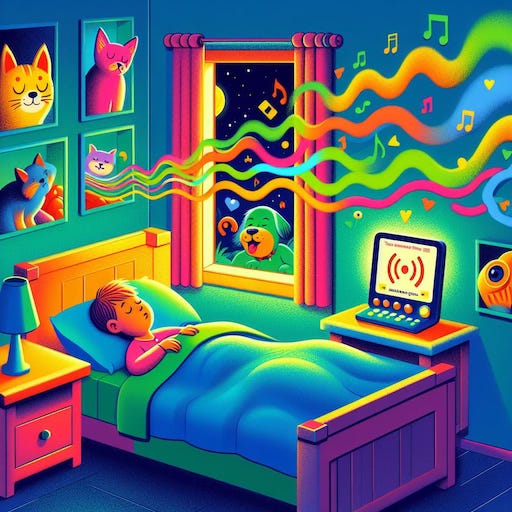Teachable Machine - Exploring the world of sound
Issue 5: Exploring Audio Projects
Hey there, budding audio wizards!
In the previous issues, we conquered the world of images and became fruit identification superstars. Now, get ready to expand your horizons! This issue, we'll explore the fascinating world of sound recognition with Teachable Machine. Buckle up, because we're about to build projects that can actually hear!
Sounds Like Fun: Unveiling Audio Projects
Imagine creating a model that can identify different musical instruments in a song, or distinguish between the sounds of a cat meow and a dog bark. That's the power of audio recognition with Teachable Machine! Here are a few exciting project ideas to get your creative juices flowing:
Musical Maestro: Train a model to recognize different instruments like guitar, piano, or drums.
Animal Orchestra: Build a model that can identify the sounds of various animals – meow, woof, moo!
Everyday Soundscape: Create a model to distinguish between common sounds like doorbells, phones ringing, or car alarms.
These are just a few ideas to spark your imagination. The possibilities are endless!
Let's Get Recording: Building Your First Audio Project
Teachable Machine makes audio recognition projects surprisingly easy. Here's a basic breakdown of the process:
Collect Your Sounds: Gather audio recordings of the sounds you want your model to recognize. You can record them yourself, use royalty-free sound effects online, or find creative ways to capture sounds in your environment.
Label Your Recordings: In Teachable Machine, upload your sound recordings and assign labels to each one. For example, if you're building a musical instrument project, label your recordings as "guitar," "piano," or "drums."
Train Your Model: Just like with images, Teachable Machine will use your labeled recordings to train your model. The more recordings you provide, the better your model will learn to differentiate between sounds.
Test and Refine: Once trained, put your model to the test! Play audio recordings it hasn't seen before and see how accurately it identifies the sounds. If the results aren't perfect, don't worry! You can always go back and add more recordings or refine your labels for better performance.
Detailed Example: Building a "Cat vs. Dog" Sound Classifier
Let's build a simple model that can distinguish between cat meows and dog barks!
Record the Sounds: Ask a friend or family member with a cat or dog if you can record some short audio clips of their meows or barks.
Tip: Try to capture a variety of meows and barks – high-pitched, low-pitched, short, long – to give your model a more diverse dataset.
Labeling in Teachable Machine: Upload your recordings to Teachable Machine and assign clear labels. For example, label recordings of cat meows as "Cat" and recordings of dog barks as "Dog."
Training and Testing: Train your model using your labeled recordings. Once trained, test it with new audio clips to see how well it identifies cat meows and dog barks.
Improving Your Model (Optional): If your model struggles, you can try collecting more recordings or adjusting training parameters (refer back to Issue 4 for a refresher on advanced training options).
Activity: Brainstorm Your Audio Project!
Now it's your turn to unleash your creativity! Here are some prompts to get you started:
What sounds do you find most interesting in your daily life?
Can you think of a way to use audio recognition to make a game or a helpful tool?
Imagine you could create a model that recognizes a specific sound, like your mom calling your name! How could that be useful?
Write down your ideas and share them in the comments!




